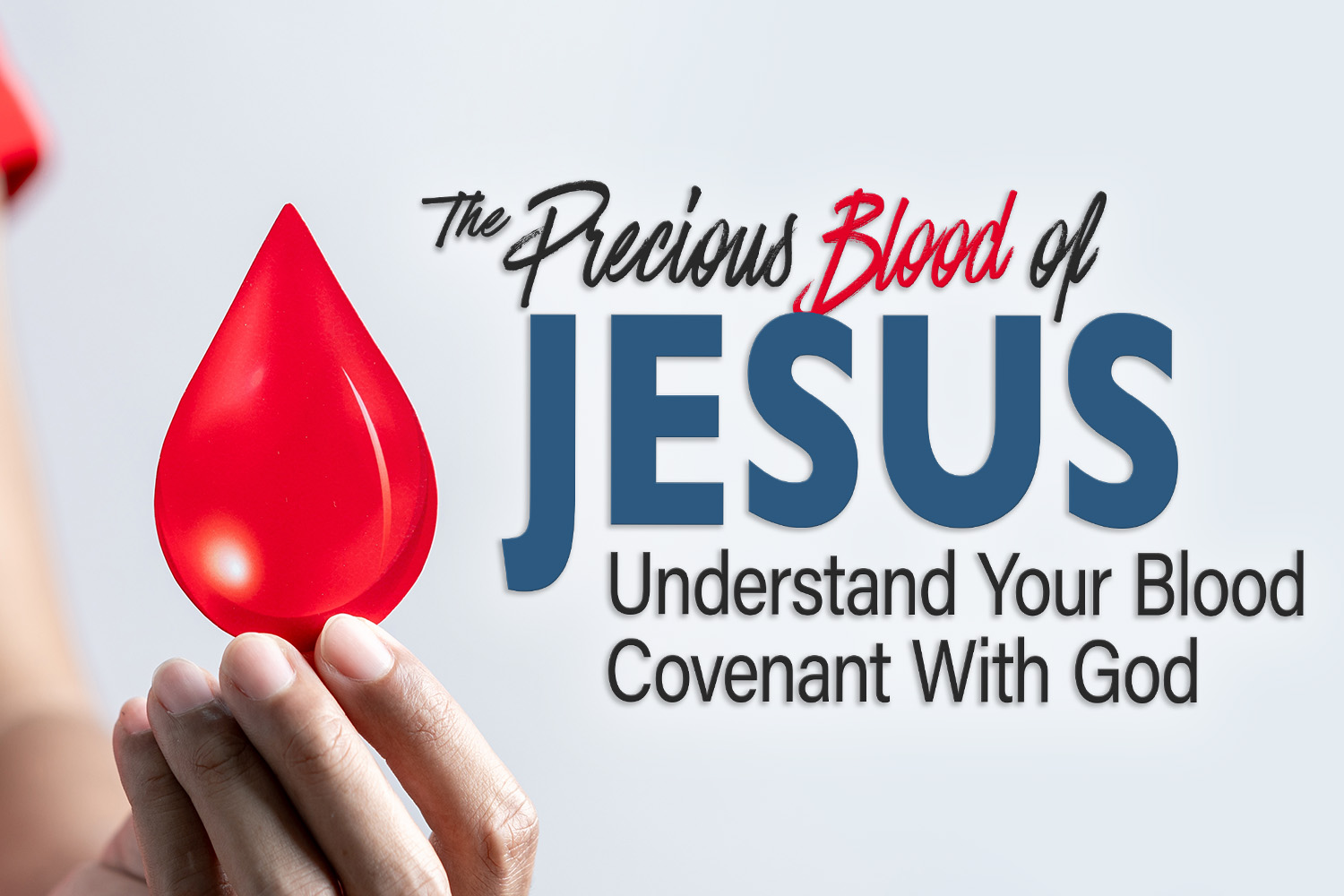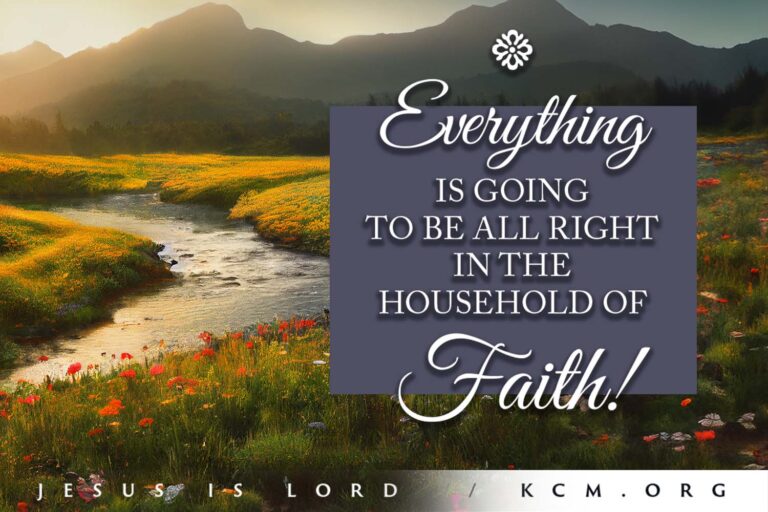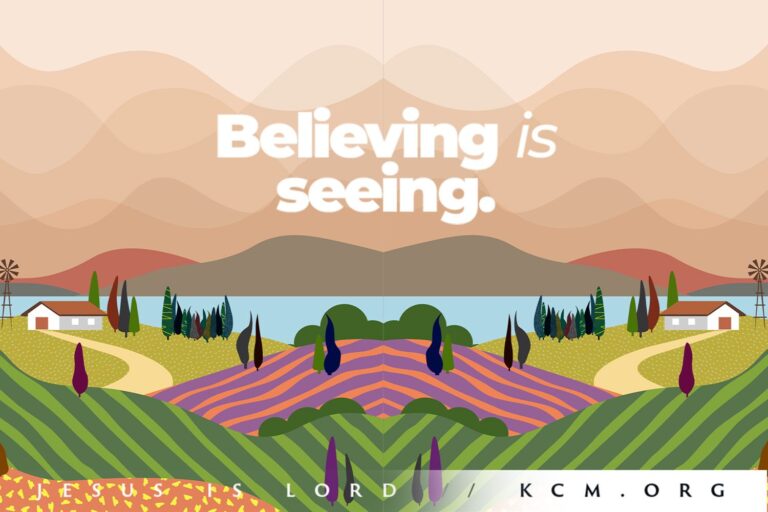It’s time to really understand your blood covenant with God.
by Kenneth Copeland
When I was a kid, I always wanted a blood brother. I wanted one so bad, I didn’t know what to do. I never had any brothers or sisters, so I tried to get my friends to become blood brothers.
I remember thinking, “Indians are supposed to have blood brothers….”
I never could find any white boys who wanted to see their own blood. It was neat in the movies, but when it came time to make “the cut,” they didn’t want any part of it.
Today, in our “civilized” society, we are not very aware or conscious of covenants—at least, not like our ancestors were—particularly, blood covenants.
In ancient days, among all tribes of people and all civilizations, there was the common practice of covenants made by blood. These blood covenants were a matter of totally giving oneself to another without any reservation for life. It meant complete loyalty. What’s more, once a blood covenant was cut between two individuals or families, that covenant was an agreement that lasted for at least eight generations.
With the passing of time, however, and the more “sophisticated” our cultures became, the human family strayed from such covenants. Consequently, today, many believers are unaware of their own blood covenant with God. They have no real understanding of eternal promises written in the precious blood of Jesus.
In that covenant of blood, God has provided everything we need to take authority over our flesh and let the image of Christ be fully formed in us. God’s covenant has given us the power to succeed in every task and fulfill every dream He has put in our hearts. So, let’s take a close look at the rich depth and range of promises God made in His covenant with us, sealed in the blood of Jesus.
In the days of the ancient Hebrew nation, families cut covenant as well. In fact, the Hebrew word for covenant literally means “a cut where blood flows.”
These blood covenants were the principle behind scriptures such as Proverbs 18:24, which says, “…There is a friend that sticketh closer than a brother.” They were also the reasoning behind phrases such as, “Blood is thicker than water.”
The motive behind blood covenants was, quite simply, differences—that is, covenants were based on the strengths and weaknesses of the parties involved.
For instance, one family or tribe might be good farmers, while a neighboring family or tribe might be known for being superior warriors. So, why not come together and cut covenant and enjoy the benefits of each other—especially if the farmers were always getting robbed, and the warriors were always going hungry.
Before these covenants could be made, however, there were usually lengthy discussions between both parties. After all, an agreement made in blood spanning eight generations was serious business.
To better understand the significance of blood covenants, as well as our covenant with God, it would help us to walk through the seven steps of a traditional Hebrew covenant ceremony.
Step 1: Each family, or party, chose a covenant representative.
The person representing the family was always the family’s best—the smartest, the strongest, the fleetest of foot.
Likewise, the animals to be used in the covenant ceremony were always the best. They were carefully selected and prepared. The Hebrew people had learned this early on when God instructed them to offer only the best when bringing sacrifices to Him. He didn’t want any one-eyed, diseased animal on His altar.
Consequently, this is where the term the fatted calf came from. In today’s terms, we commonly think of the fatted calf being the best of something to consume ourselves. Actually, it was the choicest one set aside for covenant ceremonies and sacrifices.
Finally, a covenant site was chosen, and the families would come together. Each family’s council of elders was placed where they could watch closely and hear every word spoken.
Step 2: The covenant cut was made.
In the ancient Hebrew covenant ceremony, the cutting of the sacrificial animals was done differently from every other sacrifice or ceremony.
The covenant cut was made from the base of the animal’s skull, lengthwise down its backbone. The animals were split and then parted down the backbone. Each half was made to fall side to side, but then propped up so the blood would flow down a pathway.
The covenant animals usually included a calf and a lamb. The calf represented monetary value. It represented the family’s possessions. The lamb represented total defenselessness. In fact, the lamb used in the ceremony was so young that it did not yet have teeth. It had no defense.
By sacrificing these animals, each family was saying, “We freely bring our blood to this covenant. We come with no malice—totally free, totally loyal.”
Once the animals were cut and their blood shed on the ground, the covenant ceremony began.
Step 3: The representatives exchanged coats.
Each representative walked through the pathway of the animals’ blood twice, and they did so in a figure eight. After they walked through the blood the first time, they stopped and exchanged coats while making certain promises about who they were, what they had, and what they meant to the other person. This was similar to our modern military traditions.
In our society, we know you can tell a soldier’s rank by the coat that he or she wears. Their coats represent their authority, their occupation or specific task, their branch of service, and so on. We also know when a private walks into a room filled with soldiers, not much happens. When a general walks in, however, everyone stops everything to jump to attention and salute.
But now, imagine a private—wearing a general’s uniform—walking into the room. That private would get the same response as the general. Why? Because it’s the general’s uniform that does the talking.
The same held true for the blood covenant ceremony. A farmer, for instance, would come to the ceremony with a coat representing his family and his authority. A warrior would come with his. Then, at this point, they would exchange their coats, and thereby, their identities.
This adds greater insight as to why the Apostle Paul exhorts us to “Put on the whole armour of God…” (Ephesians 6:11). It doesn’t matter who is wearing it—it’s the armor that does all the talking!
Step 4: The representatives exchanged weapons.
After the representatives walked through the pathway of the animals’ blood in a figure eight the second time, they stopped again and exchanged weapons.
In those days, when men went to war, they wore a girdle, or belt. It was a girdle because their outer garments were like long, flowing robes. To be able to fight, run, or walk comfortably, they had to reach between their legs and pull the backside of their robe up to the front and fasten it underneath their belt. Strapped to their belts were also their weapons.
So, these covenant representatives would stop between the halves of these animals, standing in blood, and undo their belts. In doing so, they became vulnerable. With their robes hanging down, they were in no position to fight. That’s when they exchanged belts and weapons.
Now, if the farmer didn’t have any weapons, he at least had his fighting knife, and maybe a good axe handle to fight with. The warrior, meanwhile, probably had an assortment of ferocious looking weapons strapped to his belt.
Regardless of what they had, they exchanged weapons and belts saying, “Here’s my authority and power in war. I give it to you. Any enemy that comes against you is my enemy. Anyone who curses you, I curse. Anyone who threatens you, has to answer to me.
“Just as this animal has bled and died, I will bleed and die for your family the same as I would mine.”
Step 5: The representatives cut their flesh.
Once most of the covenant promises and blessings were made, the two representatives cut their own flesh so their blood was visible to all the council of elders. Then they brought their hands together, mingled their blood and lifted their hands to God. This was when the most precious of the vows were made between the families.
By lifting their hands to God, they were making the Creator of heaven and earth third party to their covenant, believing Almighty God to watch over their agreement. Each swore by God to keep the promises they had made.
By bringing their hands together and mingling their blood, they were called one family.
From that day on, the seal of the covenant was the scar on the body of each representative. If you saw someone with a covenant scar, you really didn’t know who you were messing with, and you would probably think twice about stirring up trouble with them. That scar meant there was a blood brother hanging around somewhere.
Remember what Jesus said in Matthew 18:19-20? “Again I say unto you, That if two of you shall agree on earth as touching any thing that they shall ask, it shall be done for them of my Father which is in heaven. For where two or three are gathered together in my name, there am I in the midst of them.”
The Church has never really figured out what that means—but it’s covenant. When Jesus said it, He meant it. We just have not had a covenant consciousness to understand it fully.
Step 6: The covenant meal.
The mighty climax of the whole covenant ceremony was the remembrance party.
In the Bible, the word remember is powerful. Exodus 2 tells us that God remembered His covenant with Abraham, Isaac and Jacob. It doesn’t say, “He happened to remember it.” God doesn’t forget. The word remember, there, literally means “the claw.” It refers to the talon of a mighty eagle.
Among some of the Hebrew tribes, people cutting covenant were known to take an eagle’s claw and put it in their face and say, “My remembrance of you is as though I were still in the blood, promising you everything I have. My covenant with you is like a claw in my brain. I cannot even see except for seeing you in my face.”
This remembrance party, or covenant meal, was where the families began eating bread, drinking wine, dancing and celebrating. They would actually feed bread to one another, saying, “This is my body. I will let your family have my body, before I will let them starve.”
Then, sharing wine, they would remind each other that it represented the blood they had just walked in, making them one family.
Step 7: The families exchanged names.
By the time the covenant ceremony was completed, both parties or families had new names. For example, if the Farmers and the Fighters cut covenant, Phil Farmer was now Phil Fighter-Farmer, and Fred Fighter became Fred Farmer-Fighter.
Such covenant names were another indication for troublemakers to leave Phil, the farmer, alone. That was not just Phil Farmer, anymore. That was Phil Fighter-Farmer. That was not just Fred Fighter, either. The Farmer-Fighter family now had plenty of food to sell. They had covenanted with the Farmer family. They were now one large, powerful family.
Today, we often see names of families that have a hyphen in the middle of them. That means, somewhere along the way, those two families came into covenant.
Ephesians 3:15 says “the whole family in heaven and earth is named” of Jesus. By covenant, we bear the Name of Jesus—the Name that is above every name. And by covenant, we go into all the world bearing that Name (Mark 16:15-18).
You Have a Big Brother
To understand just how passionate God is about this covenant He has made with you in the blood of His own son Jesus, look at 2 Corinthians 6:16-18, “…For ye are the temple of the living God; as God hath said, I will dwell in them, and walk in them; and I will be their God, and they shall be my people. Wherefore come out from among them, and be ye separate…and I will be a Father unto you, and ye shall be my sons and daughters, saith the Lord Almighty.” This was Paul quoting from Isaiah 52 and Ezekiel 20.
Old Testament writers used a covenant word, which in Hebrew is hesed. It is translated as “ever lovingkindness; tenderness; mercy.” These translations, however, miss the depth and power of its meaning.
Hesed is best described, perhaps, as what happens inside a mother or a father when their child is threatened. Only, it goes far beyond that.
Hesed is the force that rises inside a covenant brother causing him to want to show himself strong for the benefit of his covenant brother, or covenant family. It is a drive that far exceeds any other drive known to mankind. We’ve only tasted a small bit of it.
From God’s perspective, hesed might best be described using John 3:16: “For God so hesed the world, that he gave his only begotten Son….”
Long before God ever created man, He provided a covenant lamb, a Lamb without spot or blemish, so if man did mess up, it would keep him from losing everything—and it would keep God from losing the family He so longed for.
After Adam did commit high treason and bowed his knee to Satan, he lost the presence and revelation of God. When that happened, the first thing God did was to kill an animal in order to clothe Adam. He had been clothed with the very glory of God, but when he sinned, the Glory light went out.
Later, however, God found for Himself a man, Abram, a man with whom He could cut covenant, a man who would teach his children that covenant (Genesis 18).
But why did God require the blood of animals?
He did not have any blood of His own to shed. When Abram sinned, God said, I’ll take the blood of an animal, rather than him. I’ll treat him as though he didn’t sin. I’ll account it to him as righteousness—because he believed Me (Galatians 3).
Abraham believed the promises of God, the promises that were to him and his seed.
Galatians 3:13-14 says, “Christ [the Anointed One and His Anointing] hath redeemed us from the curse of the law, being made a curse for us…that the blessing of Abraham might come on the Gentiles through Jesus Christ.”
The Apostle Paul goes on to say that, when God made those promises to Abraham, He was also making them to Jesus, Who had not yet been born into this earth. God was making a blood covenant with a man and He expected that covenant, those words, to produce a body with blood—Jesus—wherein He could swear.
John 1:14 says, “The Word was made flesh, and dwelt among us….”
You and I are Abraham’s seed. We are heirs according to the promise (Galatians 3:29). It is no longer by the blood of cows and sheep, but by the blood of Almighty God, Himself.
Ours is a covenant between a resurrected immortal man, Jesus, and a holy and infallible God.
Which of Them do you think could ever break the covenant?
Neither.
What’s more, we cannot break it. We may step out of fellowship when we sin. But all we have to do is confess our sin and step back into that fellowship (1 John 1:9).
We’ve been grafted into a covenant between God, our Heavenly Father, and Jesus, our blood brother. Knowledge of and trust in that covenant will remove the fears of insufficiency and lack that men feed with such things as overeating and compulsive spending. It will remove the fears of rejection that have caused so many to seek comfort in wrong relationships and in what they put in the body and on the body instead of what they feed the spirit. God’s covenant love removes men from trust in the world’s ways for their security and success and builds their lives on the unshakeable foundation of God’s way of doing things.
All we need to do, now, is begin developing a consciousness of Jesus’ blood, a consciousness of our blood covenant with God. When the devil comes against you, when sickness and disease come against you, when fear, worry, harm or poverty, come against you—remember the covenant!
Remember the blood. Remember the promises. Remember the Word.
You have a Blood Brother, just turn it over to Him. You’ll soon realize just how thick His blood really is!
© 1997 – 2024 Eagle Mountain International Church Inc. Aka Kenneth Copeland Ministries. All Rights Reserved.




